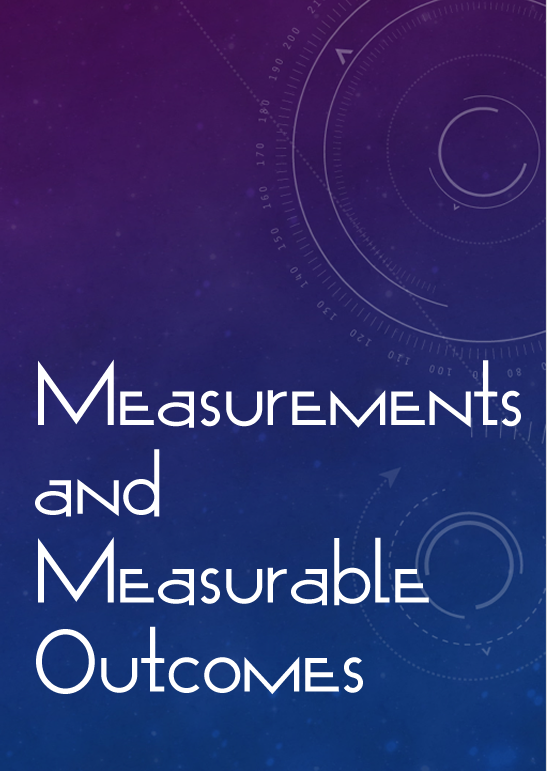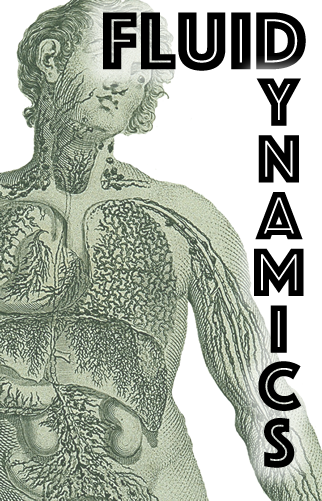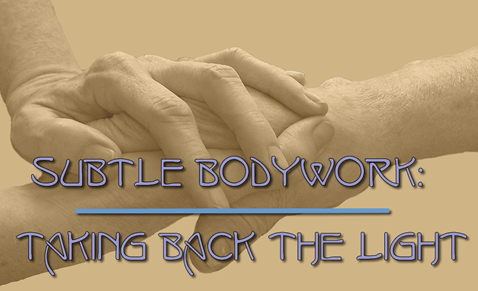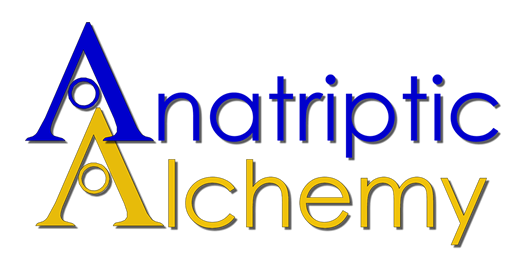
Classes focused on healthcare-oriented topics
Measurements and Measurable Outcomes for Massage Therapists
Instructor: Christopher Deery, LMT, BCTMB
(8 CE) One of the most challenging aspects of reintegrating massage therapy with other health care disciplines is communicating. What we do, what we can ethically, safely, and effectively practice addressing pain, stiffness, lack of range of motion, and other discomforts that individuals present in our sessions.
Potential benefits of utilizing measurements and measurable outcomes:
- Deeper focused and more meaningful communicating with clients about goals, measures, and getting informed consent to include this into their session.
- Developing an ability to objectively measure the outcomes (and potential outcomes) of massage sessions.
- Understanding and being able to collaborate with the client to create long- and short-term goals.
- Being able to communicate with other health care professionals.
- Having the flexibility to integrate massage therapy into an established treatment plan.
- Gathering information to n be used for case studies and research.
- Being able to demonstrate and communicate progress, benefit, and efficacy of massage therapy in your practice.
Understanding these skills will be valuable for communicating in many practice settings, from private practices to hospital programs. Participants may utilize the skills learned in this class with people during and after cancer treatment, supporting athletic competition, assisting in pain management, and post-surgical conditions.
Yes, there are easy tools to use to prove the efficacy of massage and Bodywork – goniometry, accepted orthopedic tests, muscle function tests, applications on our phones, as well as various scales based on client reporting that we can use. Some concepts were introduced in our foundational education, but we may have been less willing to embrace these methods and use them effectively.
During this class, we will be learning and reviewing one of the languages of science, using a wide variety of methods for assessments and measuring, and practicing our skills in peer to peer clinical situations to experience collaborative treatment planning and measurable changes post-massage. For every Massage Therapist or Massage Therapy Client that thinks that massage should be included in health care, encourage your peers to start thinking in the healthcare box – and learn to measure your success one outcome at a time!
Measurements and Measurable Outcomes is a hands-on class, so be sure to bring your table, a set of sheets, a bolster or two, or make arrangements so you will be able to work with your peers! It is also highly recommended that you bring something to write on!
Measurements and Measurable Outcomes: Documentable Evidence
Instructor: Christopher Deery, LMT, BCTMB
This four-hour course addresses one of the most significant deficits in Massage Therapy – measuring the outcome and potential outcomes for massage therapy sessions and communicating those outcomes utilizing various documentation methods. We need to create, keep, appropriately share the information with our clients, our co-workers, and other health care professionals. By examining short- and long-term goals, discussing the methods we can use to help our clients reach these benchmarks, and then being able to document them accurately and correctly is essential. Also covered in this course is how to read, interpret, and utilize measurements from several different tools.
We will also look at several methods of measuring the personal challenges and outcomes your client may have within their session. Several pain scales, fatigue scales, and other means of extracting measurable information from your client’s session are demonstrated and engaged, as well as a deep dive in post-session documentation styles and forms.
Understanding these skills will be valuable for communicating in many practice settings, from private practices to hospital programs. Participants may utilize the skills learned in this class with people during and after cancer treatment, supporting athletic competition, assisting in pain management, and post-surgical conditions.
Documentation and measuring outcomes is not a “sexy” or “engaging” topic, but there are more methods of documentation available than we realize. Yet accurate documentation is crucial, and as such, we will approach it with frank discussion, robust debate, stimulating conversations, engaging activities, and as well as perhaps doing a bit of chair-based work after the evaluation, and testing our ‘measurements and measurable outcomes’. Equipment needed: Something to write on, a handheld implement of destruction (Pen or Pencil), and an open mind.
Pre and Post Surgical Massage Therapy
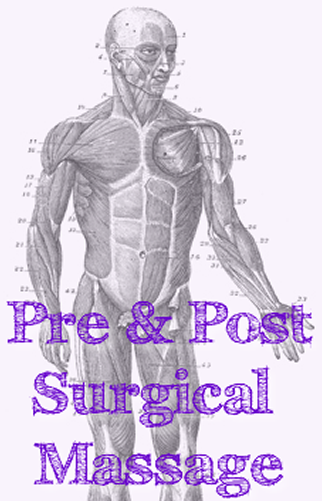 Instructor: Christopher Deery LMT, BCTMB
Instructor: Christopher Deery LMT, BCTMB
(12 CE )
Massage Therapy is an important component of health care. Helping massage clients prepare for a procedure as well as recovering from one is becoming an important facet of our professional skill set. We are conscious that massage therapists need to be informed, skilled, effective, mindful, and prepared for working with clients in private practice settings as well as integrating into the pre and post-surgical care teams.
People of all ages and activity levels may have a surgical intervention at some point. Whether it is a traumatic accident, cancer diagnosis, or an expected and scheduled procedure, there is a high probability that anxiety, muscle tension, guarding, scar tissue, swelling, lack of range of motion and pain could present. These are all things that as massage therapists we should be prepared to address. More health care facilities and medical professionals are recognizing the benefits of and utilizing massage therapy for pre and/or post-surgical issues. More people are choosing to or get a recommendation to have massage therapy as part of their procedural healthcare team. Massage therapists are increasingly being trusted to work with people before and after surgical interventions such as; Oncology, Orthopedics, Obstetrics (and that is just the O’s).
This course will not only introduce the participant to the anatomy, procedures, and concerns surrounding the most common surgeries but will prepare them to work with clients with their pre- and post-surgical conditions. Special emphasis on three of the main paradigms of pre and post-surgical care is focused on Pain, Inflammation, and addressing Scar Tissue, in addition to fibrosis, functional motion, and neuropathy.
This class will help you focus and refine the skills you have in addition to potentially new hands-on techniques and methods of approach that will be introduced and practiced in class. Working within the scope of practice of massage therapy, integrating flexible comfort and positioning for hands-on sessions, as well as adapting our existing skill sets to more effectively work within the medical paradigm is the focus of this class.
Fluid Dynamics: A Comprehensive Exploration of the Lymphatic System
16hrs. – Instructor: Christopher Deery
Many current foundational massage courses include information about the lymphatic system, the cardiovascular system, pathologies such as edema and lymphedema, and how to work with them – slow and light. That is not always the case. The human body is somewhere in the 60-75% range of being fluid – yet when we learn massage, generally, “fluid” is used to describe the movement of strokes, not necessarily the characteristics of the body.ith. This class is a comprehensive introduction and overview of the lymphatic system, its role in homeostasis, and how to work with it safely and effectively. There are some spectacular continuing education paths that people can take to explore certification in this model – but for those who want to deepen their existing understanding of the lymphatic system, refine their hands-on skills, and refresh their focus in lymphatic work, this class may be their answer.
Your instructors have over fifty years of combined experience working with the lymphatic system, integrating lymphatic work with classical massage techniques, and working holistically with the entire fluid movement system. Is working with the lymphatic system naturally slower and lighter – perhaps, but just like most massage and Bodywork, it depends on the individual, their presenting condition, and their reaction to the work. Incorporating a fluid-based approach to your existing practice and modifying your techniques to embrace the lymphatic system can make quite a difference to your clients and can potentially decrease the impact on your body.
Whether you are a certified lymphatic therapist, recent graduate, or a seasoned professional who wants to engage a more fluid focus in their massage and bodywork sessions, this opportunity will stimulate your intellect and give you fresh insights into working within the liquid paradigm. This class is research-informed, holistically grounded, and practically applied; it is for licensed massage professionals only. Please come prepared – at least one set of sheets per day (with appropriate linens and pillows and bolsters), and your preferred lotion or cream.
Subtle Bodywork Techniques: Taking Back the Light
8 hrs. Instructor: Xerlan Deery LMT, BCTMB
Some people just can’t handle the pressure. Some massage clients and their conditions and/or pathologies need massage therapy & bodywork with a lighter touch. The intention of this class is to introduce the participants to the term “Subtle Bodywork Techniques” in a manner that is non-offensive and clinically sound. Subtle Bodywork Techniques may be quite appropriate, safe and effective for a person who is in hospice, is very frail, in cancer treatment, experiencing pain, or is unable to receive a therapeutic massage or other more active bodywork. These techniques can be integrated into working in health care facilities as well as private practice. These techniques may also be utilized appropriately with clients who need a break from deeper work, or as an integrated part of a session including other techniques.
Participants will learn Subtle Bodywork skills from a physiological perspective that does not specifically include energetic or faith-based methodology. In this class, we will revisit the anatomy and physiology of the sensory mechanisms of the skin, fascia, and muscle and how they can be affected by the most common conditions, issues, and pathologies massage therapists may encounter. Participants will be introduced to less confrontive Subtle Bodywork Techniques such as; Soft Touch Deep Tissue, Passive Joint Movement, and Trepidations. There will be lecture, discussion, demonstration as well as some palpation exercises, so please be prepared to participate in some hands-on exchanges in class.
The student will;
- be able to recognize and perform subtle bodywork and massage techniques.
- be able to communicate effectively and ethically regarding subtle bodywork techniques.
- demonstrate proper body mechanics during the massage and bodywork session
- be able to communicate effectively the physical and kinesthetic characteristics of human anatomy that are affected by subtle bodywork techniques.
- demonstrate increased sensation in their hands refining a lighter touch.
- demonstrate ethical communication concerning their scope of practice and knowledge base.
- demonstrate and describe the uses of subtle bodywork techniques for the appropriate demographics.
This is a hands-on class, so be sure to bring a table to share, two sets of sheets, a bolster or two, or make arrangements so you will be able to work with your peers! It is also highly recommended that you bring something to write on, and with!
Safely Seated: Massage for Health Care Teams and Facilities
8 hrs.
Instructor: Xerlan Deery LMT, BCTMB
Safely Seated takes chair massage to the next level creating an improved ability to integrate with Healthcare. More and more medical practices, hospitals, and facilities are utilizing seated massage therapy with inpatients and also to reduce burnout, increase retention, and care for their employees and co-workers. Research exists about this; The effect of massage therapy on occupational stress of Intensive Care Unit nurses https://www.ncbi.nlm.nih.gov/pmc/articles/PMC4525352/
As massage therapy becomes more accepted and integrated into health care environments, more individuals that are medically involved and have mobility challenges are requesting and receiving massage therapy within and outside of healthcare facilities, hospitals, and medical practices.
This course will create more confidence through the refinement of knowledge-based and hands-on skills. Students will be able to recognize and address specific physical effects and stress of health care professionals, increase their ability to communicate with health care professionals and understand the different spaces, ethics, and culture in health care environments. Students will be able to perform safe and effective seated massage therapy that will include; clarifying contraindications, appropriate communication, how to make spatial, equipment, and hands-on adjustments for health care professionals, individuals that are medically involved, and mobility challenged.
